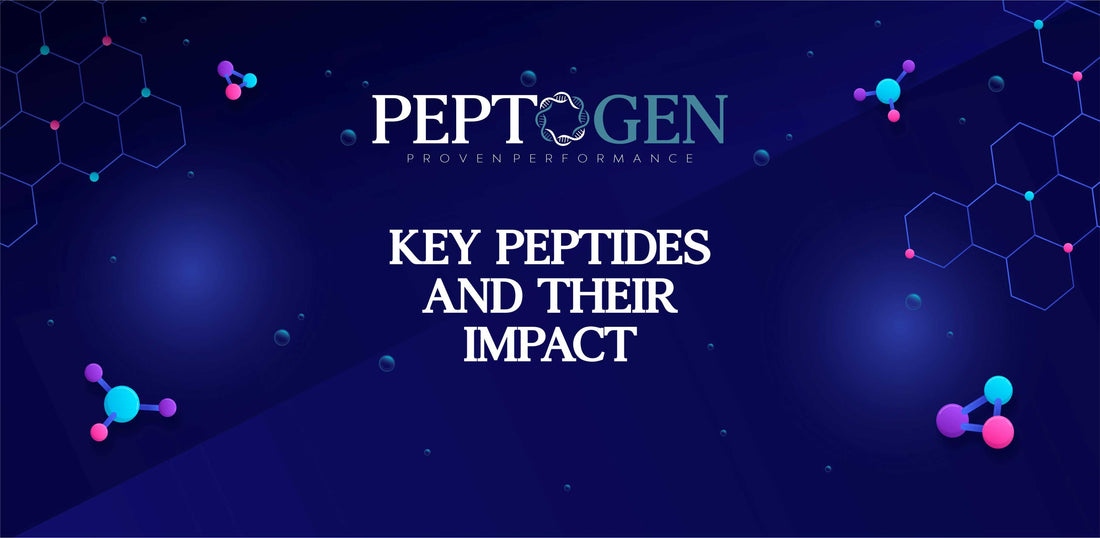
Top Peptides in Science and Their Rising Popularity
Share
Introduction
In today’s scientific landscape, certain peptides have emerged as preferred subjects of study. Their prominence is not based on commercial promises but on experimental evidence and growing academic interest. This article provides an educational overview of the most prominent peptides in research and the reasons why they are being intensely studied.
Key Peptides Under Scientific Investigation
Before diving into each example, it is important to note that these peptides stand out not for commercial hype but because of consistent scientific findings. Each one has unique properties that make it a valuable tool for exploring hormonal regulation, tissue repair, or metabolic health.




CJC-1295 (with DAC)
This peptide is a synthetic analog of growth hormone–releasing hormone (GHRH), designed to prolong its activity through a drug affinity complex (DAC). Studies have shown that a single injection can increase GH levels by 2 to 10 times for up to six days and elevate IGF-1 for 11 days. Its research relevance lies in its potential to study sustained hormonal regulation and long-term endocrine effects.
Ipamorelin
A highly selective growth hormone secretagogue that does not significantly affect other hormones such as cortisol or prolactin. Although its clinical development was limited, its use in research has made it possible to study specific mechanisms of the GH/IGF-1 axis without systemic side effects.
CJC-1295 + Ipamorelin Combination
This combination frequently appears in studies due to its potential synergy in stimulating endogenous GH secretion. It is being investigated for its possible impact on deep sleep architecture, tissue recovery, and body composition, although most data remain in preliminary stages.
BPC-157 (Body Protection Compound-157)
Derived from human gastric juice, BPC-157 is a stable and bioavailable peptide in animal models. It has shown cytoprotective and regenerative properties in musculoskeletal, digestive, and nervous systems. Although not approved for human use, its preclinical research has generated great interest in regenerative biology.
GHK-Cu (Copper Peptide)
A natural tripeptide that binds copper, present in plasma and other body fluids. Studies have shown it can stimulate collagen synthesis, accelerate wound healing, and modulate gene expression. It is being explored as a research agent in cellular aging processes and tissue repair.
GLP-1 Poly-agonists (such as Tirzepatide)
Peptides that activate multiple hormonal receptors (GLP-1, GIP, glucagon). Tirzepatide, for example, has shown up to 20% body weight reduction in clinical trials for obesity. These peptides represent a new generation of metabolic therapies, highly relevant in current pharmacology.
Comparative Summary

Conclusion
These peptides have captured scientific attention for their roles in hormonal regulation, tissue regeneration, metabolism, and biotechnology. While some, such as GLP-1 agonists, are already in clinical use, others remain in experimental stages. This blog aims to provide information from an academic perspective, without promoting the use of any compound.
Selected References:
- Nature Reviews
- PubMed Central (PMC)
- Allure Aesthetics,
- GQ, Business Insider - WSJ,
- New York Post,
- Bodyspec
